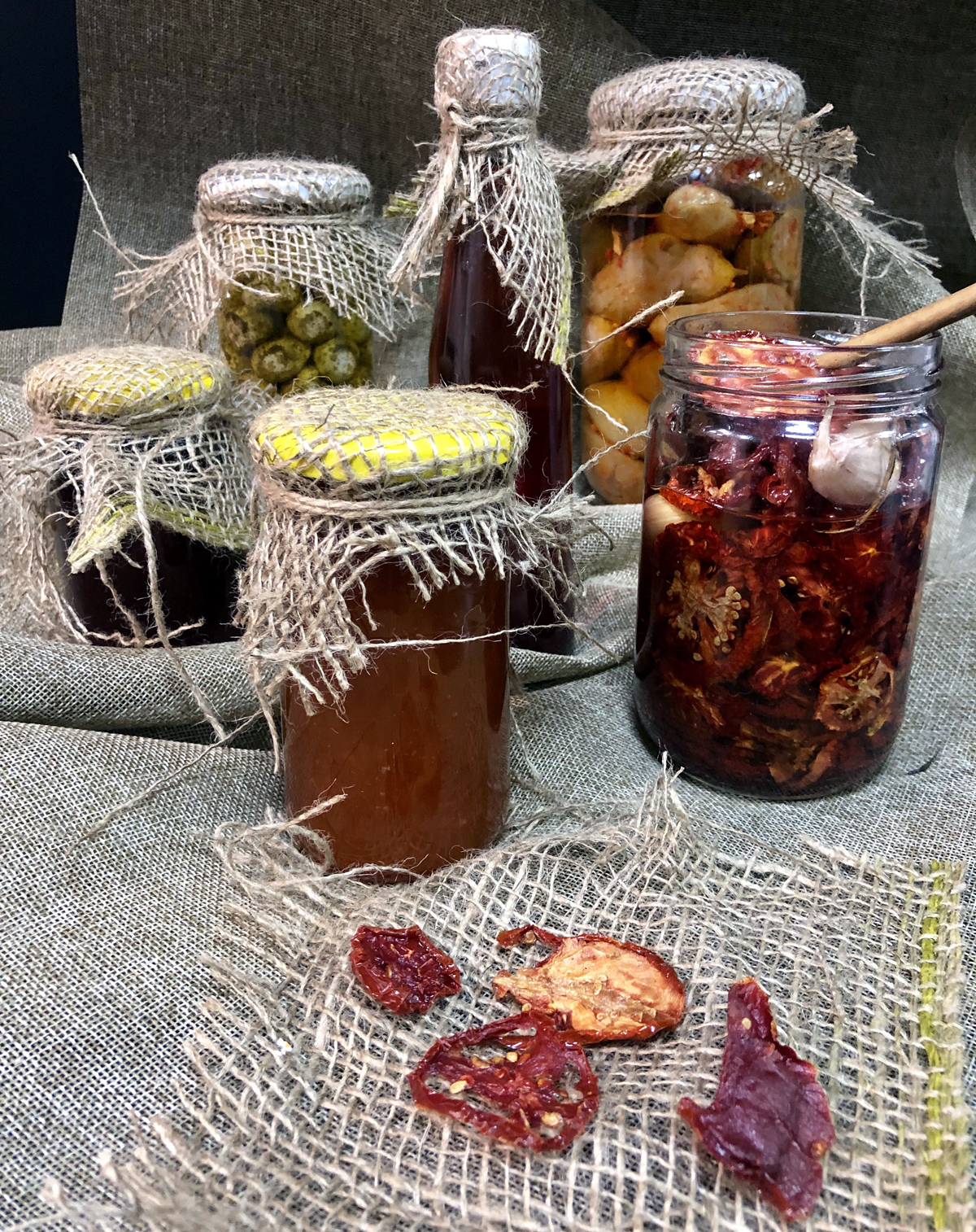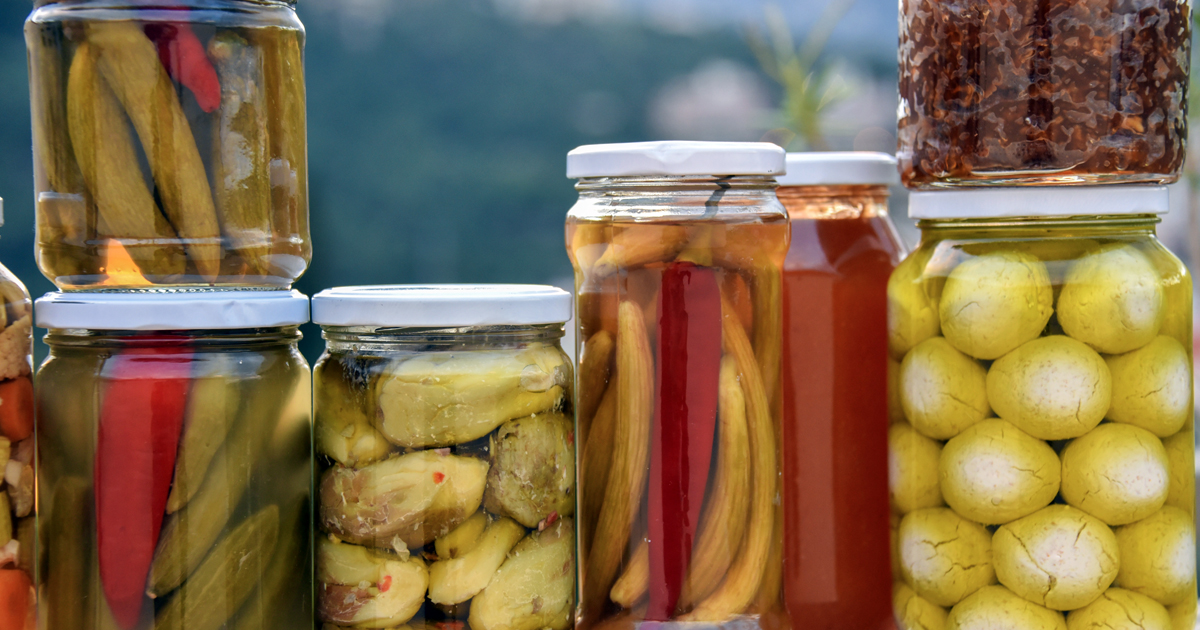Mouneh, the practice of preserving food through various techniques, constitutes an important part of Lebanese food culture. We learn more about this age-old tradition with mouneh expert Set Balkis.
A Product of Necessity
Mouneh has long since been part of Lebanese food heritage. It was common – even necessary – in the olden days due to seasonal weather; harsh winters made fresh produce hard to come by. Thus, people had to find a way to make their spring and summer produce last through the colder months.
 Different Techniques
Different Techniques
Depending on the product, there are different ways to make provisions. Drying is one of the most common ways many preserves are made not just in Lebanon but in the entire Arab world. In the villages, wicker baskets containing fruits, herbs and grains dangle from front porches. Trays filled with various foods, including meat, are also placed on the roofs of houses to catch direct sunlight.
Pickling is another way of preserving foods. Across Lebanon, you will find shops selling jars of vinegar-pickled vegetables, such as cucumbers, onions, carrots, cauliflower, chili peppers, turnip and beetroot, and oil-pickled delicacies like dried labneh, dried kishk balls and eggplant makdous. Fruit jams, jellies, pastes and preserves are made in large pots over a wood fire, while awarma (meat preserves) is made by rendering the fat of an animal (traditionally, a goat was most common), then slowly cooking its minced meat in it and storing it in a jar.

Photo – Joe Sokhn
Local Specialties
Though most mouneh is prepared all over Lebanon, some regions shine brighter with their characteristic varieties.
- Baalbeck: Eggplant makdous, kishk, apricot preserves and goat labneh.
- Byblos: Rosewater, pomegranate molasses, apple vinegar, apple preserves and kishk.
- Hammana: Anything with cherries.
- Keserwan: Goat cheese.
- North: Olive oil, sumac and zaatar.
- South: Bulgur, freekeh, zaatar, sesame and orange blossom water.

